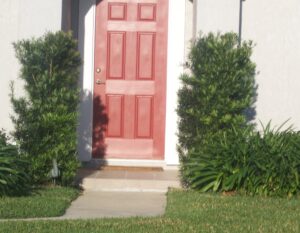S & J Nursery’s Guide to Growing
Podocarpus / Japanese Yew
For North Florida Jacksonville
| St. Augustine area Landscapes
( Podocarpus Macropyhllus)
Podocarpus Macrophyllus / Japanese Yew  Origins:
Origins:
– Native to Eastern China, Japan..
Podocarpus Macrophyllus Exposure:
– Podocarpus will thrive in any full sun location and will tolerate some partial or half sun and half shaded conditions in the North Florida Landscape.
Podocarpus Macrophyllus / Japanese Yew Foliage:
– Soft strap like foliage of the Japanese Yew is a deep green color and ranges between 2-4 inches in length.
Podocarpus Macrophyllus Soil Preference / Salt tolerance:
– Podocarpus is tolerant of a wide range of soil conditions providing they are planted in a well draining location. Do not plant these in flood zones or where water drains slowly after storm rains.
– Low maintenance landscape planting
– High salt tolerance makes Podocarpus an excellent landscape choice for the coastal areas of Northern Florida landscapes.
 Podocarpus Macrophyllus Size Variance:
Podocarpus Macrophyllus Size Variance:
– Podocarpus Macrophyllus can grow up to 40+ ft high and 20 ft wide although easily kept as low as 5-6 ft High and 3-4 ft Wide with just annual shearing.
Podocarpus Macrophyllus Growth Habit:
– Podocarpus Macrophyllus has a columnar, upright habit much taller than wide and needs minimal pruning.
Podocarpus Macrophyllus Growth Rate:
– Podocarpus Macrophyllus grow slowly in the North Florida landscape only adding a 3-6 inches to its height each year.
Podocarpus Macrophyllus Bloom:
– Inconspicuous blooms followed by small purple berries in the fall.
Podocarpus Macrophyllus Water Requirements:
– Drought tolerant landscape selection once established into the landscape.
Butterfly or Bird Attracting:
–
Best Uses For Podocarpus in the North Florida | Jacksonville | St. Augustine area landscape :
– Podocarpus makes an excellent evergreen privacy screen or taller hedge row for the back of the border or foundation planting. Plant where space from surrounding hardscapes or buildings make its narrow growth habit
advantageous.
– Beautiful accent along taller two story houses where height is needed without width.
– Allow this tree to grow removing the lower branches to clear it up as a tree and Podocarpus will make an excellent Xerascape accent planting or ornamental tree.
– Podocarpus responds well to pruning and is often used in topiary forms for landscape ornamental.
– Low maintenance landscape plant selection!
Care of S & J Nursery’s North Florida | Jacksonville | St. Augustine Shrubs:
– Shrubs can be planted in the North Florida | Jacksonville | St. Augustine area at any time during the year. In normal and well draining soils dig the hole as deep as the root ball and two to three times as wide. Plant the top
of the root ball level or slightly higher than the surrounding soils. When planting in poorly drained soils make sure to plant your shrubs a minimum of 3 inches ABOVE the surrounding soil level.
– Water every day during the establishment period. For most 3 gallon size shrubs in the North Florida landscape in average soil, that is neither heavy clay that holds water or really sandy that will take 2-3 weeks of daily watering to ensure that your newly planted shrub will begin to put out new roots and grow into its new home happily. After the first few weeks begin tapering back your watering to every other day then every third day and so
on until your newly planted items are flourishing without your assistance.
– If planting larger shrubs you may need to extend the initial care a bit longer to protect your investment and get your shrubs off to the best start possible.
– IMPORTANT: If planting shrubs in heavy clay soils that hold allot of water after a rain or irrigating, remember to check the soil for moisture by sticking your fingers into the soil near the root ball of the newly planted shrub down to 2-3 inches. If it remains wet from the previous watering wait for the top 2-3 inches to dry out before watering again.
– IMPORTANT: When planting shrubs into poor sandy soils be sure to amend the planting hole by mixing compost or cow manure etc. with the native soil that will go back in the hole around the new plants root ball when installing your shrub material, this will not only give your new shrubs good soil to grow its new roots into but help it hold water.
– When planting shrubs from containers be sure to loosen the roots as much as possible pulling loose roots away from the root ball before installing your new plants, if the roots are to tight to easily loosen with your hands use a knife to cut a few slits into the root ball being careful to go all the way from the top to the bottom and making the cut at least an inch deep. This will ensure that your plant will immediately begin to form new roots
into its new surrounding soil.
– Mulch newly planted shrubs whenever possible.
– Fertilize each spring with a mixture of Milorganite and a slow release poly coated plant food such as Osmocote or Stay Green general purpose plant food, sprinkling the fertilizer around the mulch circle underneath the foliage of the tree.
– Prune as needed to shape each spring and or summer.

